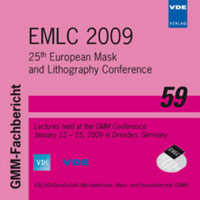Particle transport and reattachment on a mask surface
Konferenz: EMLC 2009 - 25th European Mask and Lithography Conference
12.01.2009 - 15.01.2009 in Dresden, Germany
Tagungsband: EMLC 2009
Seiten: 11Sprache: EnglischTyp: PDF
Persönliche VDE-Mitglieder erhalten auf diesen Artikel 10% Rabatt
Autoren:
Nesladek, Pavel; Kohl, Christian (Advanced Mask Technology Center, Raehnitzer Allee 9, 01109 Dresden, Germany)
Osborne, Steve (Sigmameltec Ltd, 3-37-7 Shimoasao, Asao-ku Kawasaki, 215-0022 Japan)
Inhalt:
The cleaning processes used today for photomasks were developed over decades and optimized to fulfill customer specifications. Some mask procedures were adapted from wafer cleaning technology. A principal technique, megasonic (MS) cleaning, yields high particle removal efficiencies (PRE). However, MS can frequently cause feature damage, and so damage becomes the principle limitation to MS power levels applied to small feature sizes. The use of lower MS power levels can benefit from a better understanding of removal mechanisms. In several publications the effects influencing the mechanisms of particle cleaning were discussed. Particle transfer was investigated experimentally on wafer surfaces using bath tools and was tracked using fluorescent optical microscopy. The goal of our investigation is to test the validity of the aforementioned models for mask cleaning using a spinning mask and a megasonic head mounted on a arm swinging over the mask surface, which is the most common hardware setup used for mask cleaning tools. While this equipment setup provides a useful variability, it also introduces disadvantages e.g. non-equal distribution of the megasonic power across the cleaned surface as will be shown. We will focus on some of the main parameters e.g. chuck speed, arm swing speed and media flow, which are strongly coupled by the fluid dynamics and cannot be treated separately. All three parameters influence particlemask decoupling and reattachment during particle transport by the media stream across the mask surface. The approach to estimate the particle removal and reattachment rate is illustrated. The experiments performed allow the conclusion that the reattachment rate on a flat spinning mask surface is lower than previously assumed and the most critical part of the cleaning process is the detachment of the particle from the surface.


